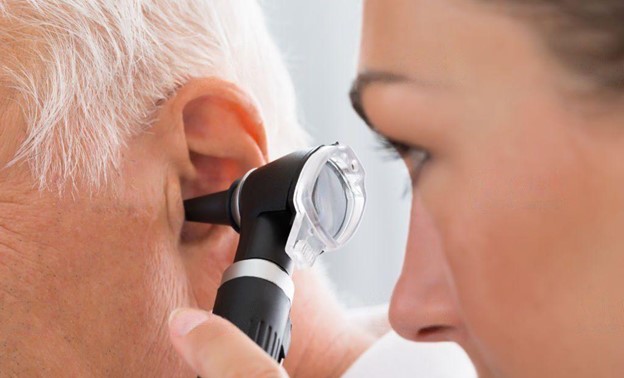
An ear infection is a common condition that can cause pain, discomfort, and hearing loss. Although they can affect people of all ages, ear infections are most common in young children.
The majority of children will have at least one ear infection before they turn three years old.
To prevent these sorts of complications our ears produce ear wax. Earwax is quite beneficial.
Unfortunately, sometimes earwax can accumulate and form a blockage, which can lead to an ear infection. Other reasons or complications that happen in our ears could also lead to infection.
In this article, we will look at the causes, symptoms, and treatment of ear infections, including the safe removal of ear wax.
Ear Infection
An ear infection is a condition in which the middle ear experiences inflammation or swelling as a result of bacterial or viral infection. Characterized by pain and discomfort, an ear infection can be serious if left untreated and can potentially lead to permanent hearing loss.
There are two main types of ear infections:
- Otitis externa (outer ear infection) and
- Otitis media (middle ear infection).
Outer ear infections are caused by bacteria or fungi growing in the outer ear canal’s skin. Middle ear infections occur when fluid builds up behind the eardrum and becomes infected.
Symptoms of Ear Infections
It can be easy to assume that an ear infection isn’t anything to worry about, especially if you don’t have any further symptoms besides occasionally feeling some mild discomfort or pressure in your ears.
However, it is important to be aware of the full range of symptoms that can indicate an ear infection, as many people assume that earache is the only symptom to look out for.
In reality, several other telltale signs may be caused by an ear infection:
Symptoms of an outer ear infection may include:
- Itching in the affected ear
- Pain in the affected ear
- Redness in the affected area
- Swelling in the affected area
- Discharge from the affected ear
- Hearing loss
Symptoms of a middle ear infection may include:
- Ear pain
- Fever
- Feeling pressure in your ears
- Hearing loss
Causes of Ear Infections
The most common cause of middle ear infections is a blocked Eustachian tube. This is a tiny tube that connects the center of each ear to the rear of the throat.
Its purpose is to equalize the pressure in the middle ear and drain fluid from the middle ear. When a person has a cold, allergies, or sinus infection, the Eustachian tube can become blocked.
This allows fluid to build up in the middle ear, which provides a perfect environment for bacteria or viruses to grow. Children’s ear infections are also more prevalent than adults’ as young Eustachian tubes are shorter and far more lateral, making them more susceptible to becoming clogged.
Outer ear infections will occur when bacteria or fungi enter the skin through a cut or break.
Other causes of ear infections are:
- Swimmer’s ear
- Upper respiratory infection
- Sinus infection
- Allergies
- Age
- Diabetes
- Autoimmune disorders
- Ear wax blockage
Activities that can lead to ear infections:
- Flying in an airplane or going scuba diving without equalizing the pressure in your ears.
- Using sharp and injurious objects to clean ear wax
- Smoking cigarettes
- Using cotton swabs to clean your ears
- Using objects that remove too much earwax
- Wearing tight-fitting headphones
- Constant exposure to loud noises
The Many Wonders of Earwax
We all know that earwax is icky. It’s smelly, it’s sticky, and it’s just plain gross. But did you know that earwax is beneficial for your ears?
That’s right, earwax serves a purpose! It helps to protect the ear canal by trapping dirt and dust particles. It also serves as a natural lubricant, which helps to keep the skin in the ear moist.
This is important because dry skin is more susceptible to injury and infection.
The function of earwax
Even though it’s gross, earwax plays an important role in keeping our ears healthy. Earwax is produced by the sebaceous glands in our skin and serves to lubricate, clean, and protect the ear canal.
Earwax also has antifungal and antibacterial properties. In other words, earwax is nature’s way of keeping our ears clean and infection-free!
However, sometimes too much earwax can accumulate and form a blockage. When this happens, it can create the perfect environment for bacteria to grow, leading to an ear infection.
The Dangers of Ear Cleaning
One of the biggest dangers of ear wax cleaning is that you can push the wax further into the ear canal. This can block the ear canal and lead to an infection.
Ear infections are extremely painful and can often result in hearing loss if not treated properly.
Another danger is that you can damage the delicate skin in the ear canal. This can lead to cuts and scratches, which provide a perfect entry point for bacteria and other pathogens.
So next time you reach for the cotton swabs, think twice about whether or not you need to clean your ears. Chances are, they’re just fine the way they are.
Earwax Removal
There are many methods for removing ear wax, including over-the-counter drops or irrigation with a syringe or bulb.
However, these methods can sometimes do more harm than good. If not done correctly, they can push the wax further into the canal and cause damage to the eardrum. The best way to remove excess ear wax is to see your audiologist or an ENT specialist for professional cleaning.
Treatment for Ear Infections

Treatment for outer ear infection may include:
- Applying a warm compress to the affected area
- Taking over-the-counter pain medication such as ibuprofen or acetaminophen
- Avoiding cleaning your ears with cotton swabs, paperclips, or fingernails
Treatment for middle ear infection may include:
- Antibiotics
- Decongestants
- Surgery to place the tube in the eardrum
- Antibiotics
- Steroids
- Balance therapy
If you suspect that you have an ear infection, it is important to see a doctor as soon as possible. Ear infections can cause serious complications if not treated properly.
The fastest way to get rid of an ear infection
There are a few different options for treating an ear infection. However, a quick way to handle ear infections is antibiotics or recommend over-the-counter pain relief medication your doctor may prescribe.
If you’re prone to getting ear infections, there are a few things you can do to prevent them. First, try to avoid putting anything in your ears (this includes fingers, cotton swabs, and hearing aids).
Second, make sure to clean your ears regularly with a mild soap and water solution. And finally, see your doctor if you think you might have an ear infection so that you can get started on treatment right away.
Conclusion:
An ear infection is a condition that can cause pain and discomfort but mostly goes away on its own with time. However, there are treatments available if needed such as antibiotics, decongestants, and surgery.
Prevention includes not cleaning your ears with objects that remove too much wax and instead using a warm compress to relieve symptoms. Earwax serves an important purpose in keeping our ears clean and free from infection.
However, sometimes too much wax can accumulate and form a blockage. If this happens, it’s best to see your ENT doctor for professional cleaning. With proper care, you can keep your ears healthy and free from infection!
